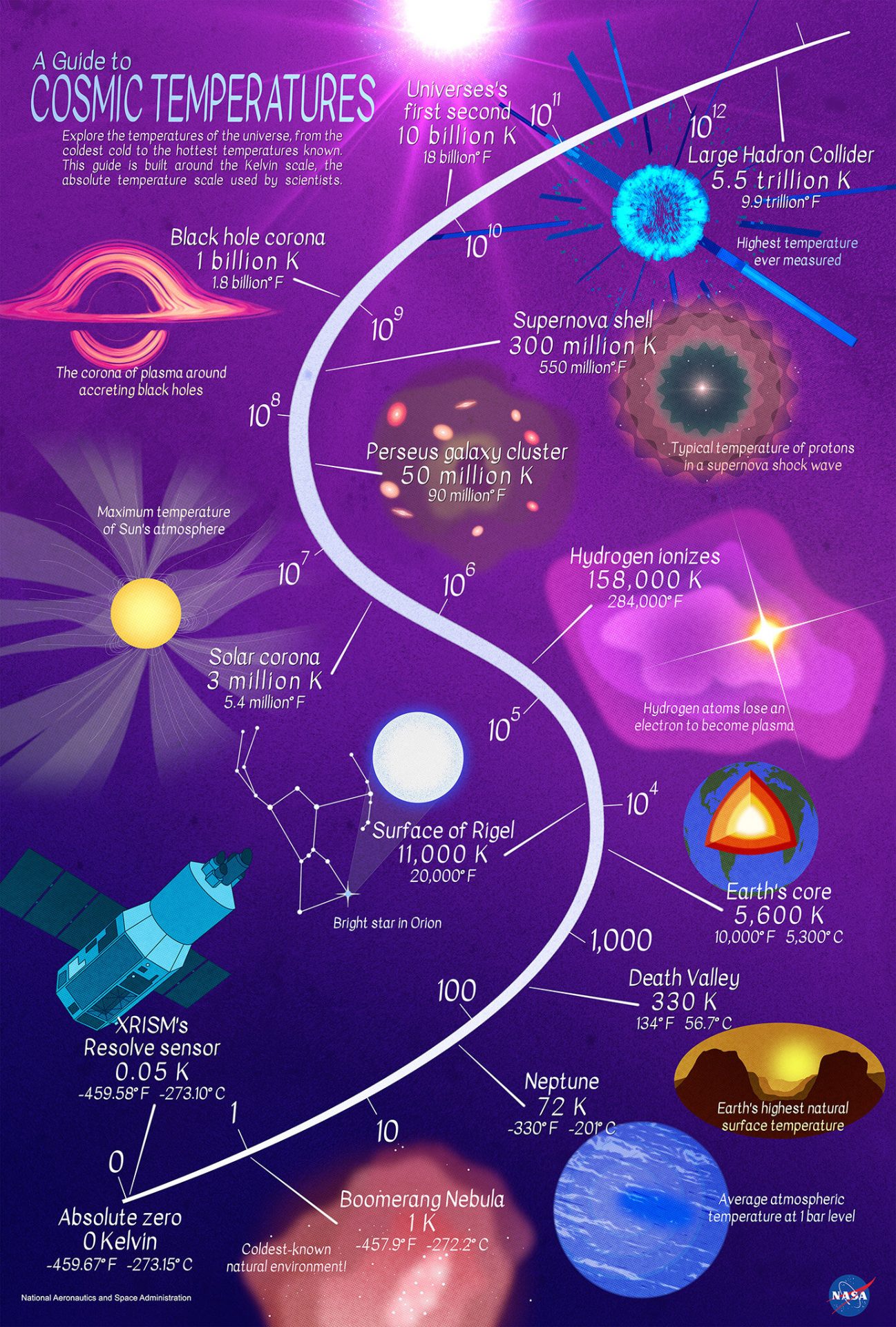Get ready to witness the hottest places in the universe like never before! Japan’s XRISM (X-ray Imaging and Spectroscopy Mission, pronounced “crism”) observatory is set to launch on Aug. 25 (Aug. 26 Japan local time). What’s even more fascinating is that it will use an instrument that’s colder than any known cosmic location.
“XRISM’s Resolve instrument will allow us to explore the composition of cosmic X-ray sources like never before,” said Richard Kelley, NASA’s XRISM principal investigator at NASA’s Goddard Space Flight Center in Greenbelt, Maryland. “We expect to gain new insights into the hottest objects in the universe, including exploding stars, black holes, galaxies powered by them, and clusters of galaxies.”
A captivating NASA infographic showcases the vast range of cosmic temperatures. At the lowest end of the scale is absolute zero Kelvin, equivalent to a bone-chilling minus 459.67 degrees Fahrenheit (minus 273.15 degrees Celsius).
The detector for XRISM’s Resolve instrument is only slightly warmer than this extreme cold. In fact, it’s 20 times colder than the Boomerang Nebula, the coldest-known natural environment, and a staggering 50 times colder than deep space, which is only warmed by the oldest light in the universe, the cosmic microwave background.
This instrument, a collaboration between NASA and JAXA (Japan Aerospace Exploration Agency), must be kept at such frigid temperatures because it operates by measuring the minuscule temperature increase caused by X-rays hitting its detector. This data allows astronomers to determine the brightness of the source in different X-ray energies, similar to the colors of visible light, and identify chemical elements through their unique X-ray fingerprints, known as spectra.
“With current instruments, we can only observe these fingerprints in a somewhat blurry manner,” explained Brian Williams, NASA’s XRISM project scientist at Goddard. “Resolve will essentially provide X-ray astrophysics with a spectrometer equipped with a magnifying glass.”
XRISM’s other instrument, called Xtend, developed by JAXA and Japanese universities, is an X-ray imager that will conduct simultaneous observations with Resolve, offering complementary information. Both instruments rely on two identical X-ray Mirror Assemblies developed at Goddard.








